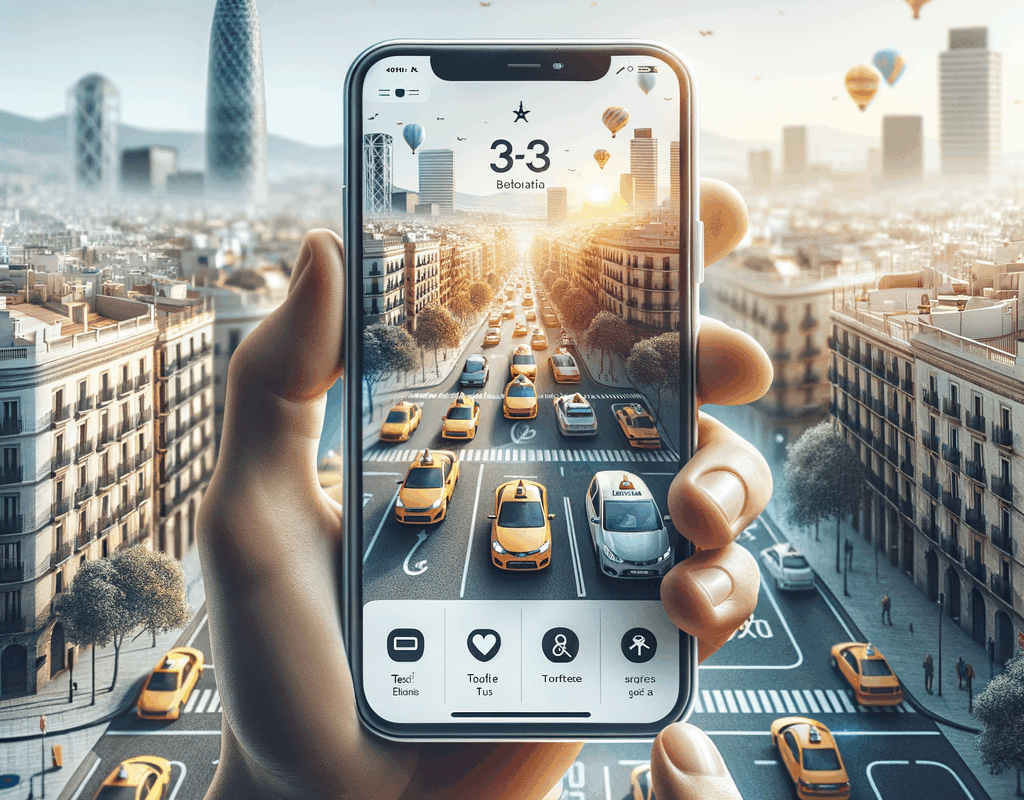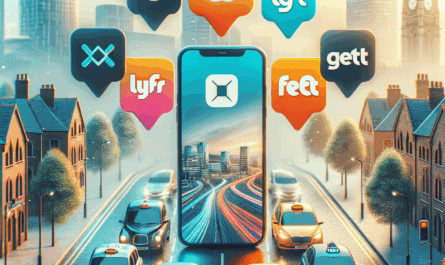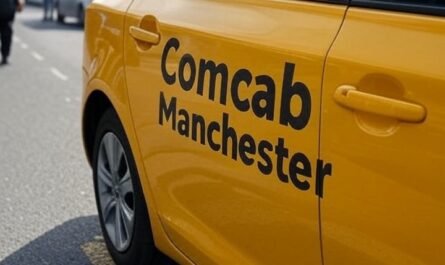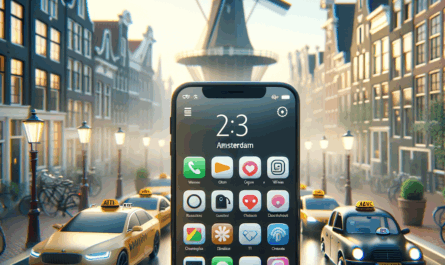Planning to move around Barcelona without the stress? Good choice. With taxi apps in Barcelona, you can skip queues, lock in prices, and navigate like a local from the Gothic Quarter to Gràcia. In this guide, you’ll learn which apps actually work well in the city (and when), how to save money during peak times, and what to do at the airport, at night, or during big events. We’ll compare Uber, Bolt, FREENOW, Cabify, and official/local providers—with real-world tips, pitfalls to avoid, and smart booking strategies.
Best taxi apps in Barcelona (and how they differ)
> Barcelona blends regulated taxis with app-based `VTC` services. The smartest approach is to keep 2–3 apps installed and compare ETA and price before you book.
Uber: Taxi integrations first, `VTC` where allowed
– Coverage: Citywide; strongest in central districts and the airport.
– Vehicle types: App-connected taxis plus `VTC` where available under local rules.
– Strengths:
– Clear ETAs and driver ratings.
– Good English-language interface and support.
– Often short waits late at night.
– Watch-outs:
– Dynamic pricing at peaks (match against taxi apps).
– Airport pick-ups may route you to designated zones—follow in-app directions.
– When to use: Late night, off-peak city hops, and when you want an English-first experience.
– Learn more: Uber’s Barcelona page lists service details and availability.
Bolt: Budget-friendly with fast ETAs
– Coverage: Broad, often quick in Eixample, Poblenou, and near nightlife hubs.
– Vehicle types: Mix of ride-hailing categories; some taxis integrated.
– Strengths:
– Competitive pricing—often one of the lowest app quotes.
– Frequent promos for new users.
– Clear upfront fare estimates.
– Watch-outs:
– Higher cancellation likelihood at extreme peaks.
– Promotions may not stack during major conferences.
– When to use: Short, budget rides and off-peak runs where price matters most.
FREENOW (formerly mytaxi): Strong local taxi network
– Coverage: Excellent; ties into large licensed taxi fleets.
– Vehicle types: Primarily regulated taxis; some private options.
– Strengths:
– Stable ETAs during busy periods due to broad driver base.
– Option to prebook rides and request accessibility features.
– Transparent pricing based on official taxi meter/fare structure.
– Watch-outs:
– Fewer steep discounts than pure ride-hailing apps.
– Meter-based trips can edge up with traffic (check set-price options if offered).
– When to use: Peak times, when reliability outranks savings, or when you want official taxi service.
Cabify: Spanish stalwart with polished UX
– Coverage: Citywide with a focus on comfort and service consistency.
– Vehicle types: Mix of `VTC` and sometimes taxis (varies with regulation).
– Strengths:
– Business-friendly receipts and preferences.
– Clean vehicles and professional drivers are a hallmark.
– Watch-outs:
– Local prebooking windows or minimum lead-times may apply due to regulation.
– Pricing can exceed Bolt/Uber during demand spikes.
– When to use: Business travel, airport runs, and when comfort and receipts matter.
AMB Taxi Barcelona (official) and radio taxi networks
– Official option: AMB’s taxi booking integrates licensed taxis set by the Metropolitan Area authority.
– Alternatives: PideTaxi and traditional radio taxi cooperatives offer app or phone bookings.
– Strengths:
– Regulated fares and official oversight.
– Easier to request special vehicles (e.g., Eurotaxi for wheelchairs).
– Watch-outs:
– Interfaces and English support can feel more “utility” than slick.
– Fewer coupons or promo codes versus global apps.
– When to use: If you prefer official channels, need accessibility, or want meter-based transparency.
– Useful resources:
– Official AMB taxi information and fares.
– PideTaxi for national taxi dispatch.
Pricing, savings, and when to book
What fares look like (and how they’re set)
– Regulated taxis use official Barcelona tariffs (base fare + per-km + time).
– Supplements may apply:
– Airport or luggage surcharges.
– Night/weekend rates.
– Where to verify:
– Always check the official AMB taxi fares page before you travel for the latest tariffs and supplements.
App quotes vs meter: Which is cheaper?
– App ride-hailing (Uber, Bolt, Cabify):
– Often uses upfront pricing that reflects predicted time and distance.
– Can surge during peaks (festivals, rain, big matches).
– Taxi-based apps (FREENOW, AMB):
– Follow regulated meters; price varies with traffic.
– Some apps offer fixed-price airport rides—compare before booking.
– Rule of thumb:
– Off-peak: ride-hailing apps often win on price.
– Heavy traffic: a fixed-price quote can beat a running meter.
– Major events: regulated taxis may be cheaper than surged quotes.
Airport transfers: T1/T2, pick-ups, and fees
– Barcelona-El Prat (BCN) has two terminals; follow in-app directions for pick-up zones.
– Expect:
– A small airport supplement for regulated taxis.
– More drivers available during daytime; consider prebooking early mornings.
– Money-saving plays:
– Compare a fixed-price taxi offer in FREENOW with an upfront Uber/Bolt quote at the same time.
– If you’re traveling light, you can combine a short app ride with Aerobús or metro for further savings.
– To plan alternatives, see our guide to Barcelona public transport.
Real-world savings example
– Situation: Poblenou to Sagrada Família, weekday 18:30.
– Bolt upfront: €8–€11 (light peak).
– Uber upfront: €9–€12.
– Taxi via FREENOW (meter): €7–€10 if traffic is smooth; €10–€13 with congestion.
– Takeaway: At moderate peak, compare quotes. If traffic is heavy, a fixed upfront price can protect you from meter creep.
Pro tips to ride like a local
Beat the crowds (and the surge)
– Keep at least two apps installed—compare ETA and price before you confirm.
– Walk one block away from tourist hotspots (Las Ramblas, Sagrada Família) for faster pick-ups.
– Travel off-peak when possible:
– Morning 10:00–12:00 or late afternoon 15:00–17:00 are often smoother.
– During rain or events, request slightly earlier than you think you need.
Make pick-ups painless
– Use precise pins; drop a short note if your street has tricky access.
– At the airport, follow signage to app-designated zones; drivers can’t stop everywhere.
– If a street is pedestrianized, set your pin on the nearest accessible corner.
Pay, tip, and receipts
– Cards and in-app payments are widely accepted.
– Tipping isn’t mandatory; locals round up small amounts (e.g., to the nearest euro) for good service.
– For expenses, use apps with itemized e-receipts (Cabify, Uber, FREENOW) and enable automatic forwarding.
Accessibility and child seats
– Request Eurotaxi (wheelchair-accessible) through FREENOW or official channels; supply details in notes.
– Few taxis carry child seats by default; bring your own travel seat or use services that allow BYO equipment.
– If you need guaranteed equipment, prebook and confirm with the driver in-app.
Avoid these mistakes (and follow these best practices)
Common mistakes to avoid
– Booking just one app in peak demand—compare at least two to avoid surge.
– Setting the pin on a pedestrian-only lane—drivers can’t reach you.
– Ignoring supplements (airport, night); they’re normal and listed on the official fare card.
– Cancelling late or repeatedly—some apps penalize with fees or reduced driver acceptance.
Best practices that pay off
– Prebook early flights the evening before with a taxi-based app for reliability.
– Save favorite locations (hotel, coworking, stadium) for one-tap requests.
– Use short text notes: “Main entrance of Hotel X, yellow canopy.”
– Screenshot license plate and driver details when meeting in crowded areas.
Regulation and prebooking windows (what to know)
– Barcelona applies specific rules to `VTC` services (e.g., lead times, service conditions). These can evolve.
– Practical tip:
– If an app shows longer lead times or restricted pick-ups, switch to a taxi-based app to stay within local rules.
– Always check in-app notifications or help centers for current conditions before big events.
Mini case studies: When strategy beats waiting
Mobile World Congress week
– Problem: Demand spikes citywide, especially mornings and late evenings.
– Playbook:
– Use FREENOW or AMB to prebook taxis for sessions and dinners.
– Keep Bolt for opportunistic short hops between venues when it undercuts surged fares.
– Expect longer ETAs near Fira Gran Via; walk to wider roads for faster pick-ups.
– Outcome: Reduced wait times and fewer cancellations, even at peak.
Late night from the beach clubs
– Problem: Congested beachfront and limited stopping zones.
– Playbook:
– Set pick-up on a main artery (Av. Litoral or Marina) rather than the promenade.
– Compare Uber vs FREENOW; taxis may be cheaper if ride-hailing surges.
– Outcome: Faster boarding and predictable pricing.
Rainy Sunday to the airport
– Problem: Elevated demand and slower traffic raise both ETAs and meter costs.
– Playbook:
– Compare fixed-price taxi options with Uber/Bolt upfront quotes.
– Add a 15–20 minute buffer to your request time.
– Outcome: On-time arrival with a protected fare.
Which app should you choose?
– Prioritize reliability: FREENOW or the official AMB option, especially for time-critical rides.
– Prioritize price: Bolt/Uber off-peak, with Cabify for comfort and receipts.
– Family or accessibility needs: Taxi-based apps for Eurotaxi and special requests.
– Mixed strategy: Install two global apps plus one taxi app—then compare in real time.
For more scenario-based planning, see our airport transfer savings guide for Spain.
Conclusion
Barcelona is a city that rewards planning. With the right mix of apps, you’ll get faster pick-ups, transparent prices, and fewer surprises—whether you’re catching sunrise at Montjuïc or a table in El Born. Install two ride-hailing services and one taxi app, compare quotes on the spot, and prebook when timing matters. That’s the easiest way to make taxi apps in Barcelona work for you. Ready to try a side-by-side comparison on your next ride?
FAQ
Q: Is Uber legal in Barcelona?
A: Yes, within local rules. Availability and lead times can vary by service type and time of day.
Q: Which app is cheapest?
A: It depends on demand. Bolt or Uber often win off-peak; taxi apps can be cheaper during surge or with fixed-price airport options.
Q: Do I need cash for taxis?
A: Not usually. Most drivers and apps accept cards; in-app payment is widely supported.
Q: Are child seats provided?
A: Rarely by default. Bring a travel seat or prebook with notes; confirm with the driver.
Q: How much is a ride from the airport to the center?
A: Expect a regulated taxi fare with an airport supplement. Compare a fixed-price taxi quote against Uber/Bolt before booking.





